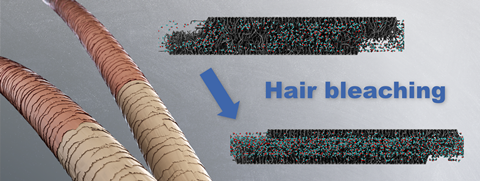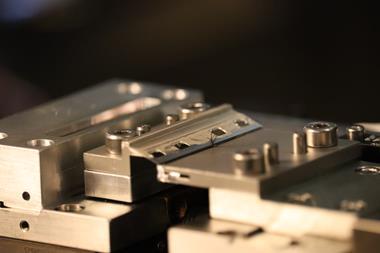An investigation into hair surface friction has extended chemical understanding surrounding bleached hair.1 It confirmed that surface chemistry modifications, rather than roughness changes or subsurface damage is responsible for increased friction at the nanoscale level in bleached or chemically damaged hair. Erik Weiand, who co-led the work at Imperial College London, UK, says the methodology they developed for the study could also be used to assess new haircare formulations that reduce friction in hair.
The structure of human hair varies significantly between individuals. Cuticle roughness, subsurface damage and surface chemistry all influence the extent of friction between hair surfaces. Bleaching is known to remove a protective 18-methyleicosanoic acid (18-MEA) monolayer that is bonded to hair’s underlying protein layer through thioester bonds with cysteine residues in hair cuticles. Normally, this fatty acid layer makes hair surfaces hydrophobic. Without this protective layer, hair is hydrophilic, which increases the coefficient of friction between surfaces and increases tangling. However, the extent to which cuticle roughness, subsurface damage and surface chemistry modifications contribute to this increase in the coefficient of friction in bleached hair is difficult to pinpoint due to the natural variability of human hair and the influence of microscale roughness, which leads to friction anisotropy.

Now, a team surrounding Weiand and James Ewen has developed a system for investigating friction between biomimetic hair surfaces with varying degrees of chemical hair damage. It combines a molecular model of hair they had developed last year2 with atomic force microscopy (AFM) and molecular dynamics simulations and works for dry and wet scenarios, over a range of sliding velocities. Biomimetic silica surfaces in the AFM experiments (which were performed by Yuri Roiter, at Procter & Gamble in the US) were functionalised with octadecyl groups (to represent the 18-MEA layer on pristine hair) and sulfonate groups (to represent oxidised cysteic acid groups on damaged hair). Alongside the AFM experiments, molecular simulations extended nanoscale frictional observations, establishing a high-throughput system where various formulations could be examined. ‘We’ve got a very clean system where we can test lots of things quite quickly, so we can virtually screen different formulations, molecules, polymers, surfactants and see how they get on in terms of friction and also wettability,’ says Ewen. When isolating surface chemistry modifications as a variable, the theoretical data exhibited a fourfold increase in the coefficient of friction when moving from virgin to medium bleached hair models. ‘We can see this clear trend of increasing friction with surface chemistry change, so that’s not necessarily the pure change in surface roughness, or a combination of the two, but solely the change in surface chemistry,’ says Weiand.
The work indicates that surface chemistry modifications govern friction at the nanoscale level, but that is not all. ‘It’s a high-throughput method of screening that will prove very useful for testing potential additives,’ says Mark Rutland, a surface chemist from the KTH Royal Institute of Technology Stockholm, Sweden, who investigates the surface of hair and the role of interfacial lipids. Moreover, the work presents a benchmark technique for screening different haircare formulations in both wet and dry conditions and the impact they have on the coefficient of friction.
Correction: This article was updated on 12 May 2023 to clarify who performed the AFM experiments
References
1 E Weiand et al, Nanoscale, 2023, 15, 7086 (DOI: 10.1039/d2nr05545g)
2 E Weiand et al, Soft Matter, 2022, 18, 1779 (DOI: 10.1039/d1sm01720a)












No comments yet